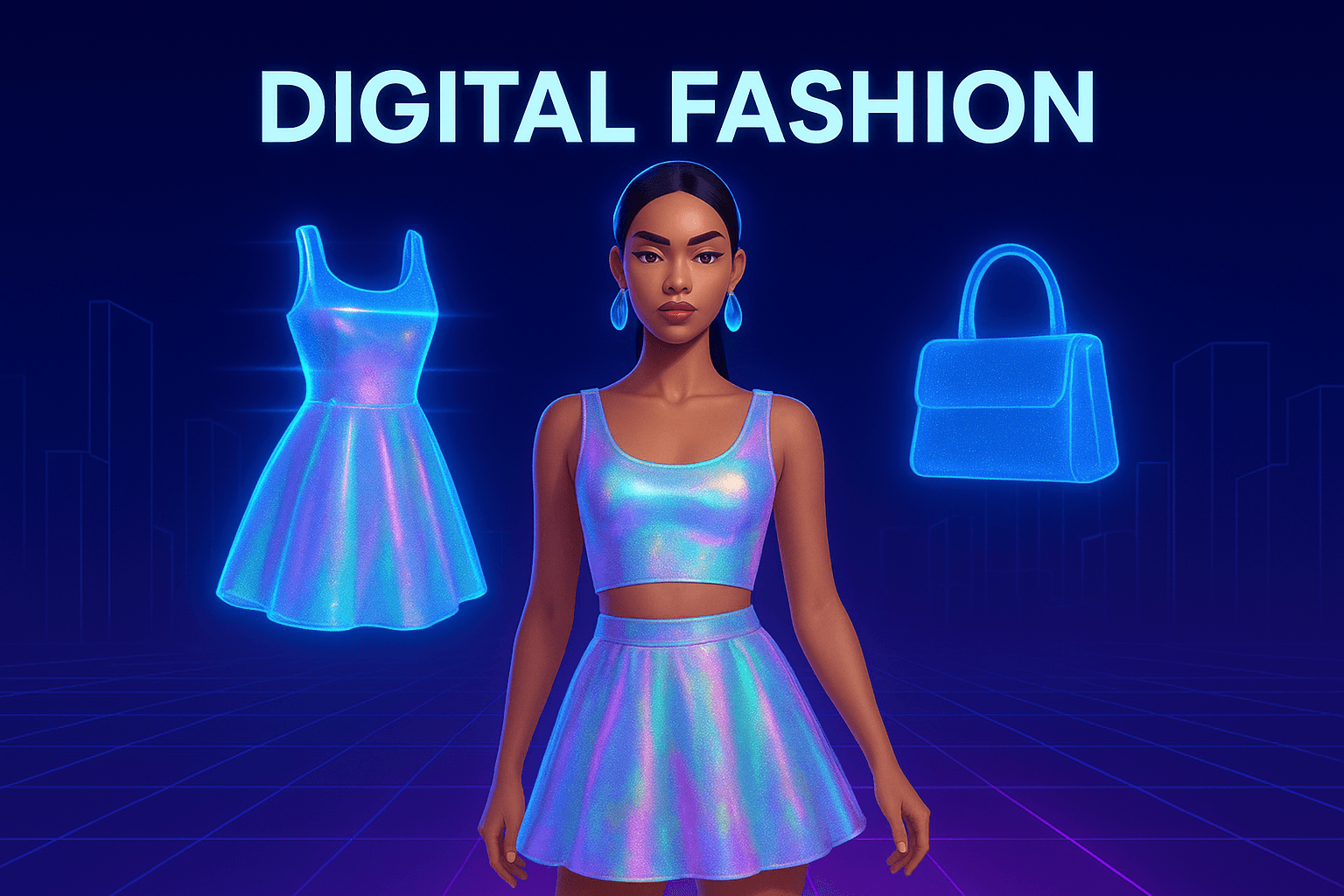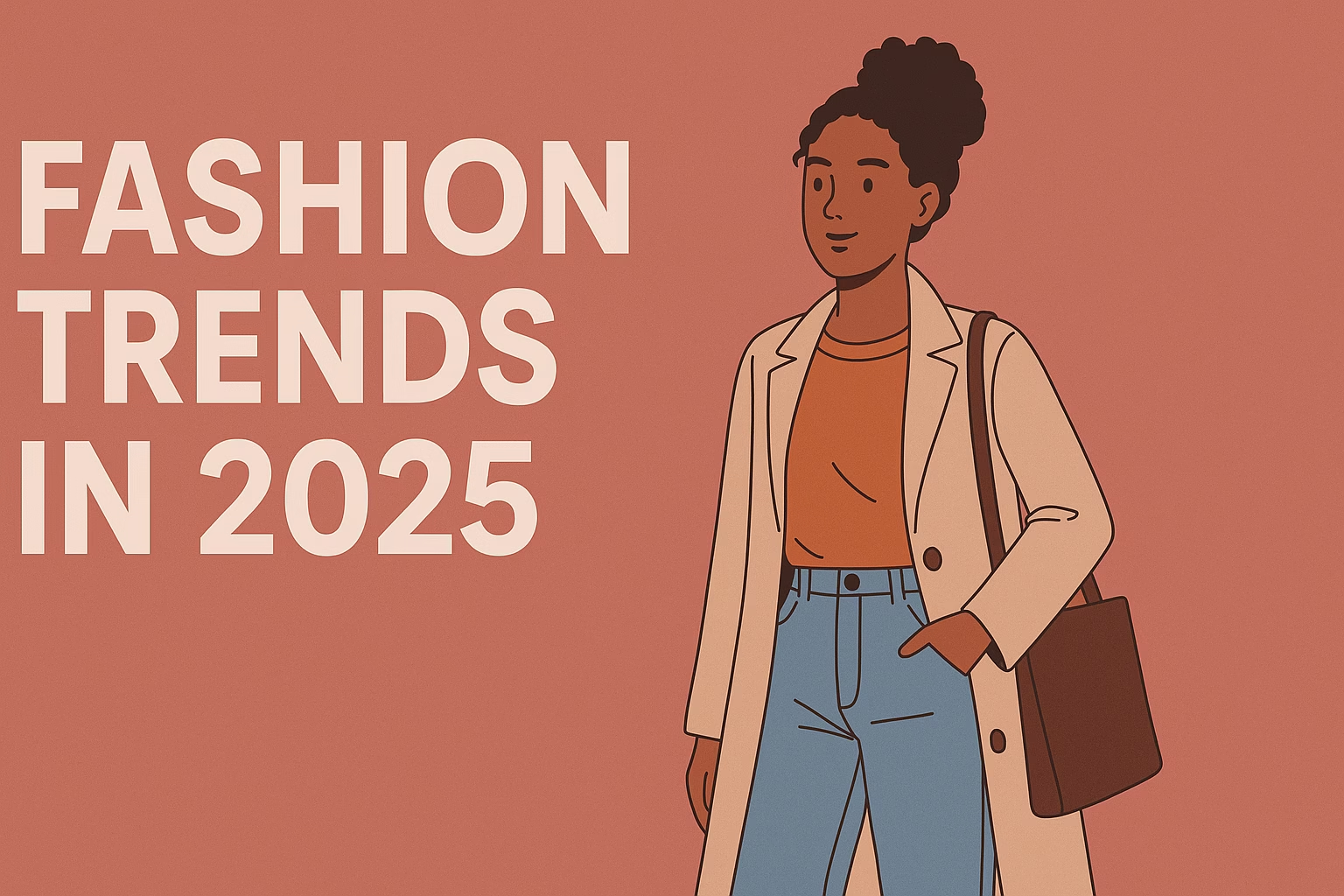Introduction
Digital Fashion: Redefining Style in the Virtual Age
Fashion has always been about more than just clothes. It’s about identity, culture, and innovation. Over the centuries, the industry has continuously reinvented itself—from handmade couture in Paris, to mass-market fast fashion, to tech-driven e-commerce. But today, we’re standing at the edge of another transformation: digital fashion.
Digital fashion is no longer a futuristic concept—it is already here, shaping how we shop, dress, and express ourselves online. From Instagram filters and AR try-ons, to NFT sneakers and metaverse wardrobes, digital fashion is redefining what it means to be stylish in the virtual age.
This blog will take a deep dive into digital fashion—what it is, why it matters, its opportunities, challenges, and how it’s shaping the future of both consumers and businesses.
Chapter 1: Understanding Digital Fashion
At its core, digital fashion refers to clothing and accessories created and existing entirely in a virtual environment. Unlike traditional garments, these pieces don’t require fabric, sewing, or physical production. Instead, they are designed using 3D software, augmented reality (AR), and blockchain technology.
Categories of Digital Fashion
- Augmented Reality (AR) Fashion
- Outfits and accessories that can be digitally overlaid on your image using a camera or app.
- Popular on Instagram, Snapchat, and TikTok as filters.
- NFT Wearables
- Clothing and accessories sold as NFTs (non-fungible tokens) on blockchain.
- Buyers own unique, limited-edition digital items with proof of authenticity.
- Gaming & Metaverse Skins
- Outfits for avatars in games like Fortnite, Roblox, and VRChat.
- Some skins sell for more than luxury handbags in real life.
- Digital-Only Fashion Shows & Collections
- Designers showcase entire collections virtually, reducing waste and logistics costs.
- The Fabricant pioneered this concept with couture-like digital dresses.
Digital vs. Physical Fashion
| Aspect | Physical Fashion | Digital Fashion |
|---|---|---|
| Production | Fabric, factories, logistics | Pixels, 3D design, code |
| Sustainability | Resource-intensive | Low impact, no waste |
| Ownership | Tangible garment | NFT or file ownership |
| Use Case | Everyday wear | Virtual identity, social media, gaming |
| Pricing | Ranges from cheap to luxury | Can range from free filters to $10,000 NFTs |
Chapter 2: The Rise of Digital Fashion
The concept of virtual clothing isn’t entirely new. Gaming has always had skins and cosmetic items that players purchased to personalize avatars. However, the real explosion of digital fashion started in the late 2010s and accelerated during the COVID-19 pandemic.
Historical Timeline
- Early 2000s: Skins in games like Counter-Strike and World of Warcraft introduced the idea of digital customization.
- 2018: The Fabricant, a Dutch digital fashion house, sold the world’s first digital dress, “Iridescence,” as an NFT for $9,500.
- 2020: Lockdowns fueled virtual experiences—people began experimenting with AR try-ons and social media filters.
- 2021–2022: The NFT boom brought digital fashion to mainstream attention. Luxury brands entered the metaverse.
- 2023 onward: Digital fashion became integrated into gaming, e-commerce, and metaverse platforms.
Gen Z & Millennial Influence
Younger generations are driving demand. Studies show that over 60% of Gen Z consumers value digital clothing for their online presence as much as physical clothing in real life. For them, Instagram outfits, metaverse skins, and digital flexing are just as important as owning physical brands.
Chapter 3: Why Digital Fashion Is Booming
Several global factors are driving the rapid growth of digital fashion:
1. Sustainability
The fashion industry is one of the world’s most polluting sectors, responsible for 10% of global carbon emissions and massive textile waste. Digital fashion eliminates physical production, offering an eco-friendly alternative.
2. Social Media Culture
In the age of Instagram and TikTok, people want new looks every day. Digital outfits allow users to post different styles online without buying endless physical clothing.
3. Gaming & the Metaverse
Games like Fortnite and Roblox generate billions annually from skins. In 2021, Fortnite made $5.1 billion in revenue, largely from cosmetic items. Brands see this as a huge fashion marketplace.
4. NFTs & Blockchain
NFTs bring scarcity and exclusivity to digital clothing. Just like a limited-edition Rolex or Birkin bag, NFT fashion pieces have collectible value.
5. Technology Advancements
High-quality 3D modeling software, AR lenses, and upcoming devices like Apple Vision Pro and Meta Quest 3 make virtual clothing more realistic than ever.
Chapter 4: Digital Fashion Brands & Case Studies
1. The Fabricant
- Dutch startup, the world’s first digital-only fashion house.
- Sold “Iridescence,” a digital couture dress, as an NFT for $9,500.
- Focuses on sustainability and democratizing high fashion.
2. DressX
- Offers digital clothing try-ons for social media and AR filters.
- Users can upload photos and “wear” luxury digital outfits.
- Collaborates with influencers to bring digital fashion mainstream.
3. RTFKT (Acquired by Nike)
- Specializes in NFT sneakers and virtual collectibles.
- Released “CryptoKicks” in collaboration with Nike, blending physical and digital sneakers.
4. Gucci Garden on Roblox
- Gucci launched a virtual experience inside Roblox, where limited digital items sold for more than physical Gucci bags.
- Example: A digital Gucci bag resold for $4,115—higher than the real-life version.
5. Balenciaga x Fortnite
- Collaboration allowed Fortnite players to dress avatars in Balenciaga.
- Showcased how luxury brands are entering gaming worlds.
Chapter 5: Opportunities in Digital Fashion
For Consumers
- Virtual Wardrobes – Own hundreds of styles without needing physical space.
- Affordable Luxury – Access branded items digitally at lower costs.
- Creative Self-Expression – Styles not bound by physics (e.g., glowing dresses, levitating accessories).
For Businesses
- New Revenue Models – Digital drops, in-game sales, and NFT collections.
- Sustainability Advantage – Marketed as eco-conscious innovation.
- Gen Z Engagement – Capturing younger audiences through gaming and social media.
Chapter 6: Challenges in Digital Fashion
While the opportunities are massive, digital fashion also faces challenges:
- Technology Barriers: AR/VR devices are still expensive and not universally adopted.
- IP & Copyright Issues: Ownership rights of digital designs are still legally unclear.
- NFT Volatility: The NFT market is highly speculative and unstable.
- Adoption Gap: Older generations may struggle to understand digital clothing.
Chapter 7: The Future of Digital Fashion
Looking ahead, digital fashion will become increasingly mainstream, blending physical and virtual worlds.
- Hybrid Fashion Shows: Combining runway events with virtual showcases.
- AI-Designed Clothing: Personalized outfits created instantly by AI.
- AR Glasses Integration: Outfits visible in real life through smart glasses.
- Cross-Platform Avatars: One wardrobe usable across Roblox, Fortnite, and metaverse spaces.
- Digital Fashion in Workplaces: Avatars in virtual meetings wearing professional attire.
Chapter 8: Monetization Models for Digital Fashion
Fashion brands and creators can monetize digital fashion in several ways:
- NFT Drops & Auctions – Limited-edition pieces sold via blockchain.
- In-Game Purchases – Selling outfits directly inside platforms like Roblox or Fortnite.
- AR Social Media Filters – Paid digital outfits for Instagram and TikTok influencers.
- Subscription Models – Monthly “digital closets” for consumers.
- Brand Collaborations – Partnerships between gaming companies and luxury brands.
Conclusion
Digital fashion is not just a passing trend—it’s a cultural and technological revolution. It combines creativity, sustainability, and digital innovation, offering endless opportunities for consumers and businesses alike.
From luxury fashion houses like Gucci and Balenciaga to startups like DressX and The Fabricant, the industry is proving that style doesn’t need to be physical to be valuable.
The future of fashion lies in pixels as much as in fabrics. Whether you’re a gamer, influencer, designer, or everyday consumer, digital fashion opens the door to infinite self-expression.
The question is: Will you be dressing your avatar tomorrow as carefully as you dress yourself today?
FAQ Section:
1. What is digital fashion?
Digital fashion refers to clothing and accessories that exist only in a virtual form. These outfits are created using 3D design, AR, or blockchain technology and can be worn online through avatars, social media, or the metaverse.
2. How do I wear digital fashion?
You can wear digital fashion by:
- Using AR filters on Instagram, TikTok, or Snapchat.
- Dressing avatars in games like Roblox or Fortnite.
- Purchasing NFT clothing for metaverse platforms.
- Uploading your photo to platforms like DressX, which digitally “fits” outfits onto your image.
3. Why is digital fashion important?
Digital fashion is important because it:
- Reduces waste compared to physical clothing.
- Offers limitless creativity (designs that defy physics).
- Opens new revenue opportunities for brands.
- Meets the growing demand of Gen Z and Millennial consumers who value online identity.
4. Which brands are leading in digital fashion?
Some of the biggest names include:
- The Fabricant (digital-only couture)
- DressX (AR fashion try-ons)
- RTFKT (Nike) (NFT sneakers)
- Gucci, Balenciaga, Dolce & Gabbana (luxury metaverse fashion)
5. Will digital fashion replace real clothes?
No. Digital fashion won’t replace physical clothing, but it will complement it. People will still wear physical outfits in daily life, but digital fashion will play a major role in online identity, gaming, and social media presence.
6. How can businesses make money with digital fashion?
Businesses can monetize digital fashion through:
- NFT collections
- Selling in-game skins
- Collaborations with metaverse platforms
- Subscription-based virtual wardrobes
- Social media AR filters for influencers








